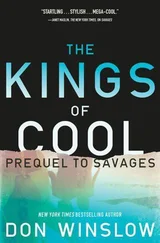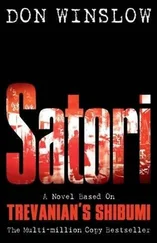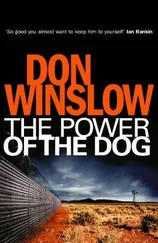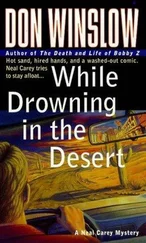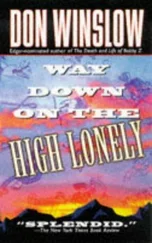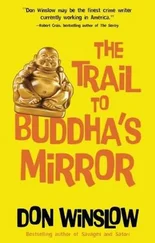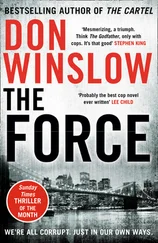Don Winslow - California Fire And Life
Здесь есть возможность читать онлайн «Don Winslow - California Fire And Life» весь текст электронной книги совершенно бесплатно (целиком полную версию без сокращений). В некоторых случаях можно слушать аудио, скачать через торрент в формате fb2 и присутствует краткое содержание. Жанр: Триллер, на английском языке. Описание произведения, (предисловие) а так же отзывы посетителей доступны на портале библиотеки ЛибКат.
- Название:California Fire And Life
- Автор:
- Жанр:
- Год:неизвестен
- ISBN:нет данных
- Рейтинг книги:4 / 5. Голосов: 1
-
Избранное:Добавить в избранное
- Отзывы:
-
Ваша оценка:
- 80
- 1
- 2
- 3
- 4
- 5
California Fire And Life: краткое содержание, описание и аннотация
Предлагаем к чтению аннотацию, описание, краткое содержание или предисловие (зависит от того, что написал сам автор книги «California Fire And Life»). Если вы не нашли необходимую информацию о книге — напишите в комментариях, мы постараемся отыскать её.
California Fire And Life — читать онлайн бесплатно полную книгу (весь текст) целиком
Ниже представлен текст книги, разбитый по страницам. Система сохранения места последней прочитанной страницы, позволяет с удобством читать онлайн бесплатно книгу «California Fire And Life», без необходимости каждый раз заново искать на чём Вы остановились. Поставьте закладку, и сможете в любой момент перейти на страницу, на которой закончили чтение.
Интервал:
Закладка:
The capillary tube (a.k.a. the GC column) starts out at room temperature, so the sample condenses into a liquid again, but the column is gradually heated inside an oven that houses it to 200 °C. The effect of all this is that the sample will gradually vaporize again and start a migration down the capillary tube.
Different chemicals make this trip at different speeds, separating from each other as a result. Some of the chemicals dissolve inside the silicone and take a long time to migrate down the tube. Other chemicals race through it lickety-split.
But, one after the other, the chemicals will emerge, each time registering a blip on the computer screen. The height of the blip indicates how much of that chemical is present. At the end of the process, you're looking at a forest of blips or peaks of various heights, which together form a recognizable pattern called the gas chromatogram.
The way Dinesh explains this concept to juries is to talk about cookie recipes. "Look," he'll say, "a recipe might call for a tablespoon of cinnamon and a teaspoon of sugar. That's the composition of that particular cookie dough, if you will — it has cinnamon and sugar in certain defined intensities. Gasoline, kerosene, napalm — any of the accelerants you're testing for — are like cookie dough in this respect: they're made of many different substances, each present in different amounts."
All the substances present in any given mixture will produce a unique and predictable gas chromatogram, a characteristic "signature" of a given mixture.
Dinesh watches as the samples start to sign in.
He starts getting a little ripple at around five minutes. At ten a modest peak. The trace drops way down, then gives him a little hill at twelve minutes. At fifteen the peak goes Himalayan. Shoots up like a rocket. Down again at fifteen minutes, ten seconds. Up again at seventeen. Big peak at eighteen, and then it starts to settle. Modest peaks at twenty, which gradually settle down. At about twenty-eight minutes it's flat again.
Dinesh watches this on a graph.
The sample signs in.
It signs in "Kerosene."
For his next magic trick, he'll analyze the sample through a gas chromatograph with a special instrument, a mass spectrometer, attached to the back.
What happens is that the gases flow out of the GC column into a vacuum port, which sucks them into the mass spectrometer. The mass spec is a steel cylinder about four inches in diameter and two feet long. It has a glass port so you can see inside the guts, which basically consist of vacuum devices, steel plates, cylinders, wires, ceramic tubes, and turbopumps that are whirring at about 100,000 rpm.
In the center of all this is a glowing filament that bombards the chemical vapors with electrons, breaking them into electrically charged molecule-sized chunks, or ions. In a microsecond these ions are weighed; in a nanosecond they're counted.
The size and number of these ions produce a characteristic "fragment signature."
(Dinesh explains it to juries like this: "Suppose you throw a flowerpot on the sidewalk. It will shatter into random pieces. It will break into different sizes and different numbers of pieces every time. No two fragments will be alike. But a molecule is a different kind of flowerpot — one with predetermined grooves, if you will. Every time you shatter it, it will break into exactly the same size and number of fragments. Each substance has its own unique, predictable fragment signature.")
Now the computer automatically compares the fragment signatures against the NIST (National Institute of Standards) mass spectral library profiles of certain substances and comes up with a match.
Kerosene.
Which almost every analyst in the country would call a definitive match. Not Dinesh. Not with a GC-mass spec, not with all those plasticizers out there gumming up the works.
So Dinesh takes the samples and runs them through a GC x GC.
"Comprehensive two-dimensional gas chromatography" is the technical term. Dinesh doesn't think of it that way. He thinks of it as looking into chemical mixtures through a Hubble telescope.
It starts off simply enough. Dinesh runs the sample through a gas chromatograph. Same process: the samples are vaporized and shot through a capillary filled with methyl silicone, where they separate into about two hundred groups of chemicals.
Instead of stopping there, or running them through a mass spec, Dinesh shoots them through an interface device into a second gas chromatographic column. See, each peak comes out of the first column for about ten seconds. Every three seconds, a little heater inside the oven is mechanically rotated. It has a slot in it which rotates over the column. It locally heats the column, which drives all the chemicals in that area out. As soon as they get beyond that "hot zone," they come to the unheated "cold zone" and get sucked right back into the methyl silicone. This forms a sharp chemical pulse. This pulse is swept along a short length of column — about 50 millimeters — and eventually is launched down the tube by the heated zone into the second GC column.
Once again, they all travel down the tube and separate.
The trick is in the methyl silicone in the second column.
It's been doped.
Doped with chemicals that produce completely different separation criteria from the methyl silicone in the first column.
("There are three chemical separation mechanisms," Dinesh will tell a floundering jury. "Volatility, polarity, and shape. Volatility is how much vapor pressure a substance puts out at a certain temperature — its boiling point, put simply. Polarity refers to the electric property of molecules. Shape is simple — it's the shape of the molecule, whether it's, say, shaped like a chain, or perhaps a closed loop.
"Now, the first GC column only separates by volatility. So two chemicals that have the same volatility will come out of the first column together — unseparated — even though they have different polarities and/or different shapes. But when they hit the doped methyl silicone in the second column, they encounter a chemical mechanism that they haven't seen before, and they separate.
"So: polarity is an electrical property of molecules. Electrostatically, the positive attracts the negative and vice versa. The molecules tend to hug each other. They can maintain this mutual affection through the first GC column, but when they hit the second… well, love does not conquer methyl silicone doped with chemicals that have electric charges on their surfaces, and they separate. Same with shape. Two very differently shaped molecules that have the same polarity but different shapes can travel down the first column disguised in happy unity as one. But when they hit the second column they will have a different reaction to the stationary phase — to the doped methyl silicone — and they'll separate.
"The performance then of one GC multiplies the other. They don't add, they multiply. So if the first can separate one hundred peaks and the second can separate thirty, then in combination they can separate not one hundred and thirty, but three thousand.")
The net result is that the chromatograms look like stalagmites rising up off a floor, instead of shark fins coming up off lines.
It's the difference between a graph and a kaleidoscope. Between a coloring book and a Matisse. Between, as Dinesh likes to think, the "Beer Barrel Polka" and a Charlie Parker solo. The GC x GC delivers a beautiful multicolored pattern, which will always be exactly the same — every time — for a given mixture. Every time you set the kaleidoscope at the setting marked "Kerosene," you'll get the same beautiful, complex pattern.
Like a signature in 3-D.
Like a fingerprint in Technicolor.
Only better.
And that's what Dinesh sees when he finishes running the first sample through the GC x GC. A two-thousand-piece jigsaw puzzle that portrays one image and one image only.
Читать дальшеИнтервал:
Закладка:
Похожие книги на «California Fire And Life»
Представляем Вашему вниманию похожие книги на «California Fire And Life» списком для выбора. Мы отобрали схожую по названию и смыслу литературу в надежде предоставить читателям больше вариантов отыскать новые, интересные, ещё непрочитанные произведения.
Обсуждение, отзывы о книге «California Fire And Life» и просто собственные мнения читателей. Оставьте ваши комментарии, напишите, что Вы думаете о произведении, его смысле или главных героях. Укажите что конкретно понравилось, а что нет, и почему Вы так считаете.


